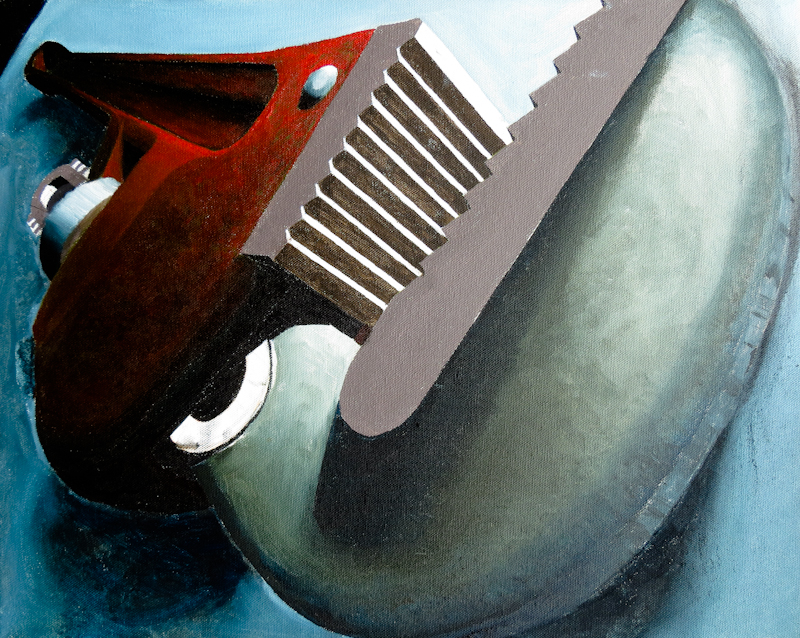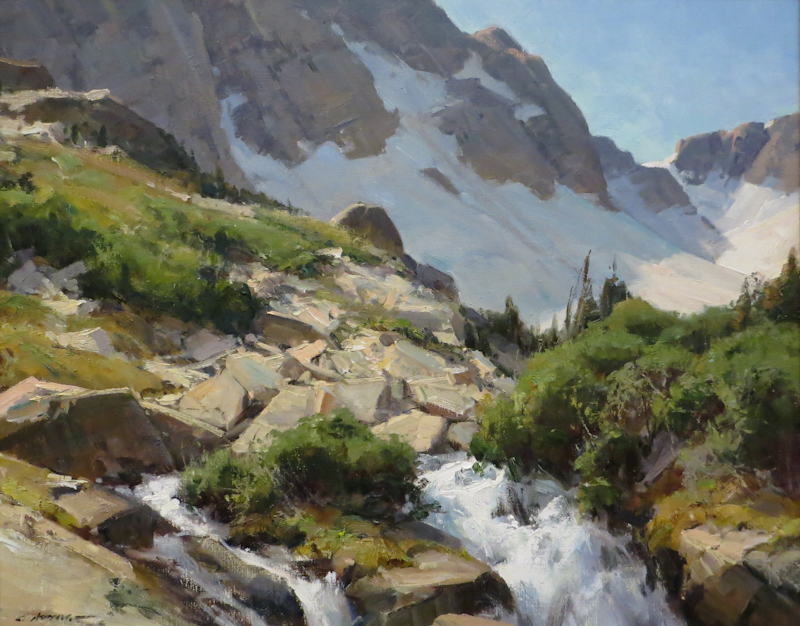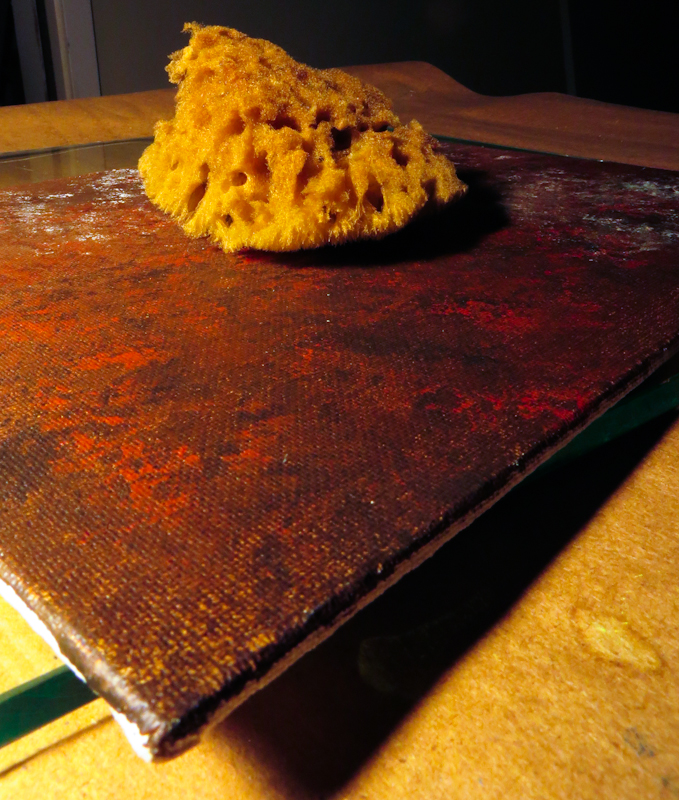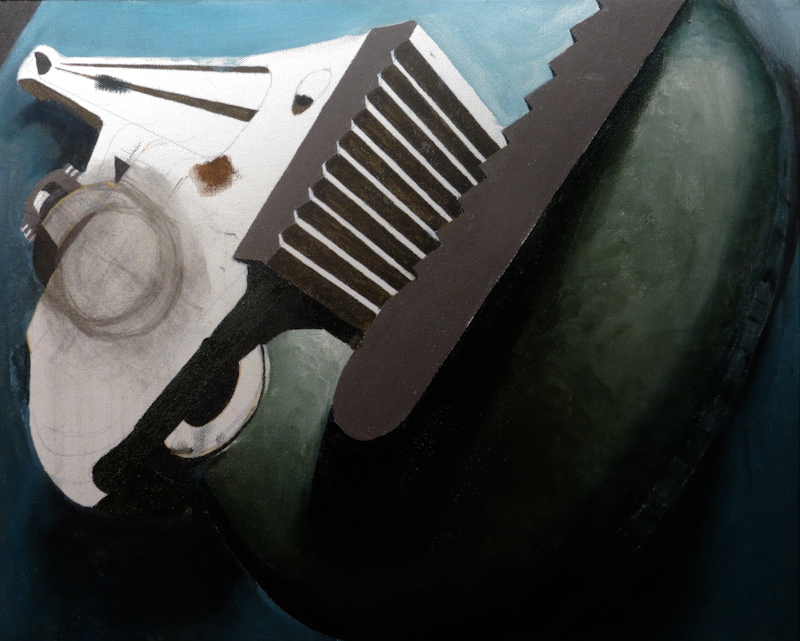I’m trying out a new palette from New Wave – it’s their Grand View Confidant model. The palette is gigantic, but very light weight and it has an ergonomic design which rests nicely against my hip. The wood is beautiful and the finish like satin.
Before I got the palette I would mix up strings on a piece of glass, but as I’ve started working on larger paintings, I have found that I do better standing, with the palette in hand. I still use strings, but with the palette, I tend to mix each stroke individually, which leads to a more interesting and realistic painting. Painting this way also seems quicker and easier.



















